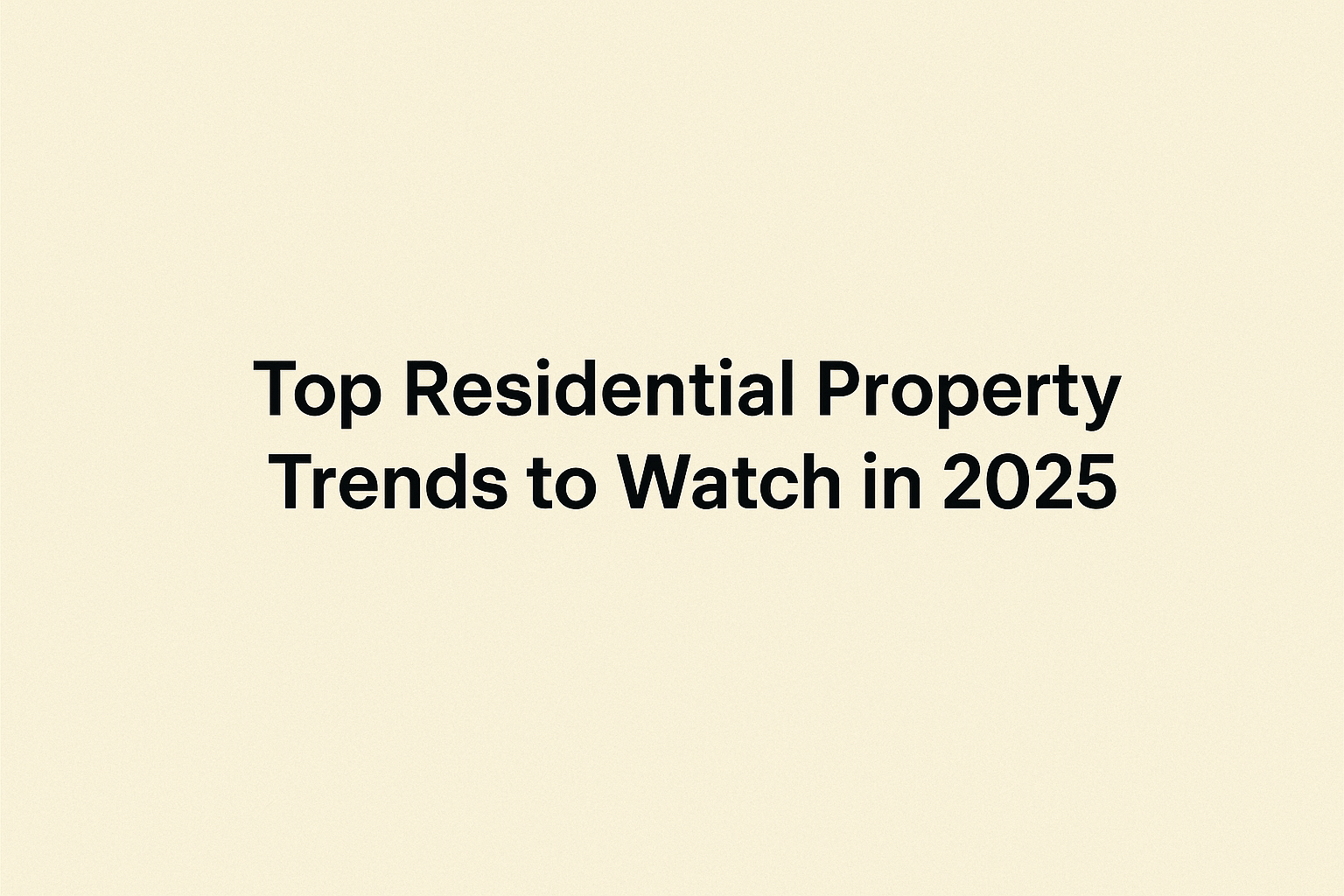The concept of “smart homes” is no longer futuristic — in 2025, it is very much a part of the reality of Indian real estate. As technology becomes more affordable and buyers’ expectations evolve, smart homes are transforming how people live, how developers build, and how investments perform. In this article, we explore how smart homes are transforming the Indian real estate market.
What Is a Smart Home?
A smart home is a residence equipped with automation, connectivity, and intelligent control systems. Examples include:
-
Automated lighting, climate control, and shading
-
Smart locks, security cameras, and surveillance systems
-
Voice assistants and sensor-based control
-
IoT-based appliances (smart refrigerators, washing machines)
-
Energy management (solar, battery storage, smart meters)
-
Remote monitoring and control via mobile apps
Why Smart Homes Are Gaining Popularity in India
-
Rising Aspirations & Tech Awareness
Younger buyers, tech-savvy millennials and Gen-Z homeowners expect homes that match their digital lifestyle. -
Better Resale and Value
Homes with smart features command higher resale prices. The convenience, security, and efficiency they provide are increasingly appreciated. Ganga Realty -
Energy Savings & Sustainability
Smart thermostats, lighting, and appliance control reduce energy consumption — aligning with both environmental goals and lower utility bills. -
Developer Differentiation
To stand out in a competitive market, developers include smart features as premium offers — early-bird incentives include smart wiring, automation packages, etc. -
Integration with PropTech Ecosystem
Smart homes tie into the broader digital real estate ecosystem — property search, virtual tours, AI valuations, remote maintenance — making the property experience seamless.
Transformations Brought by Smart Homes
A. Buyer Expectations & Market Positioning
Buyers no longer ask “if” but “how much smartness.” Properties are marketed with smart features prominently, becoming a key differentiator in buyer decisions.
B. Shift in Project Design
Architects and engineers now plan for smart wiring, sensor grids, and IoT readiness in the early blueprint stage — not as afterthoughts.
C. New Revenue Streams & Services
Developers can offer subscription models for smart services (security monitoring, energy management). Third-party vendors can integrate within buildings (home maintenance, analytics).
D. Data-Driven Maintenance & Operations
Smart homes generate data: usage patterns, fault alerts, predictive maintenance. Building management systems can optimize operations and reduce costs.
E. Improved Safety & Security
Real-time alerts, remote surveillance, biometric access, and smart access control systems enhance security, which is a strong selling point for buyers.
Challenges and Constraints
-
High upfront cost — While costs are falling, full smart integration remains expensive for large-scale adoption in affordable housing.
-
Interoperability & Standards — Multiple vendors, platforms, and protocols may not work seamlessly.
-
Privacy & Security Risks — Data breaches and hacking risks exist; privacy safeguards are essential.
-
User Adoption & Comfort — Some buyers (especially older generations) may resist learning new systems.
-
Maintenance & Upgrades — Technology becomes outdated; ongoing maintenance costs may deter some.
Real-World Examples in India
Several developers are now launching “smart home ready” projects. For example, Gangarealty points out that homes with smart features carry higher resale value and attract buyer premium. Ganga Realty
Across metro and tier-II cities, developers now embed smart wiring, rooftop solar + battery backup, intelligent security, and app-based controls into new launches.
Implications for Buyers & Investors
-
Future-proofing your investment: Smart homes are likely to be standard soon, so investing early is advantageous.
-
Better margins for developers: Smart homes allow premium pricing, lower operational costs, and differentiation.
-
Data as an asset: Collected usage data can help optimize community operations.
-
Sustainability & green certifications: Smart homes tie in with energy efficiency metrics, which boost credentialing.
The Road Ahead
Over the next few years:
-
Smart features will become standard rather than luxury add-ons.
-
Platforms and standards will unify (interopability).
-
AI, edge computing, home robotics will integrate deeper (robotic cleaning, voice-based control, predictive home adjustments).
-
Smart homes in affordable and mid-segment housing will grow as costs decline.
-
Urban planning will evolve to integrate smart infrastructure — smart streets, energy grids, smart parking.
Smart homes are reshaping India’s real estate landscape from top to bottom — in design, expectations, marketing, and operations. For anyone engaged in property — buyer, seller, developer, or investor — integrating smart home thinking is no longer optional; it’s essential for 2025 and beyond.












